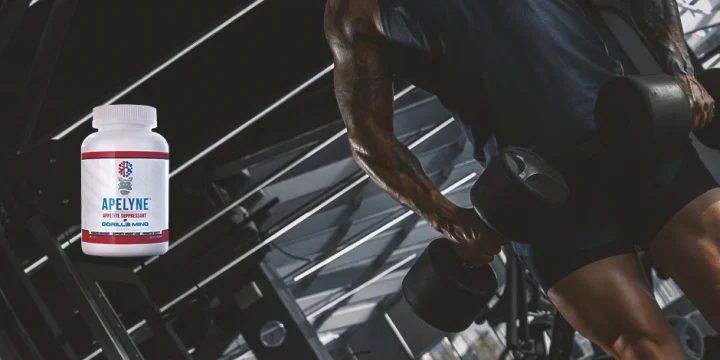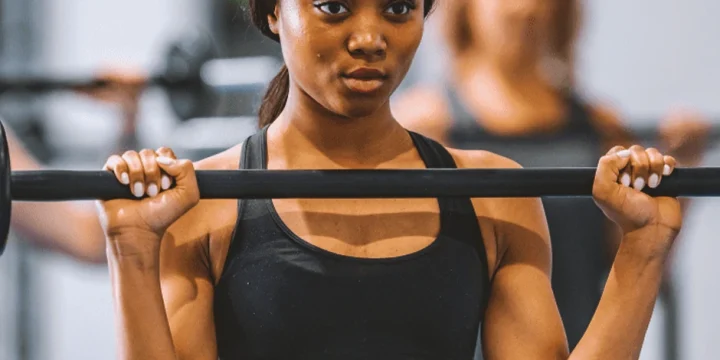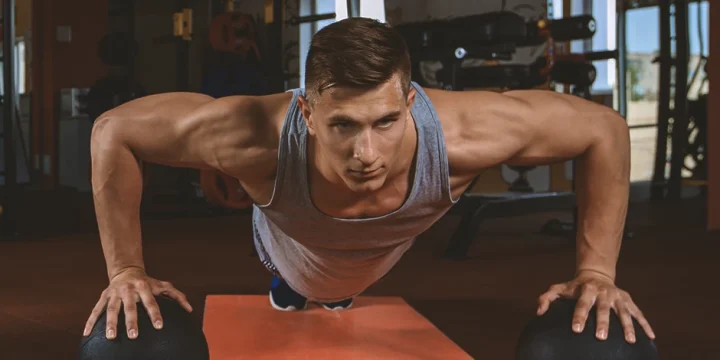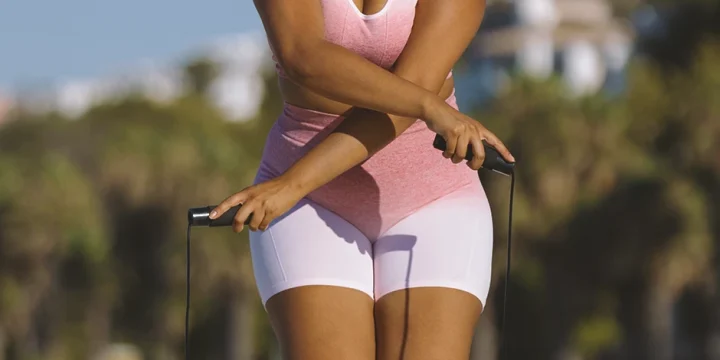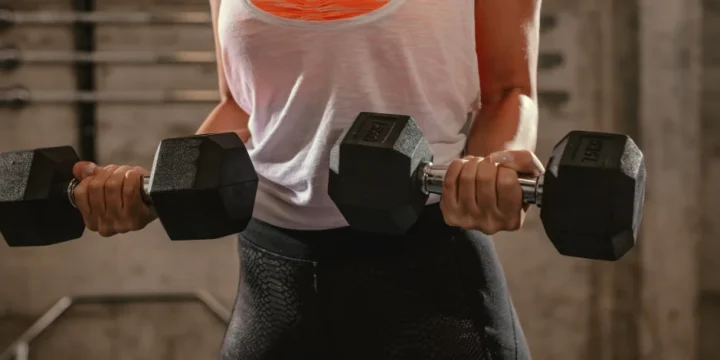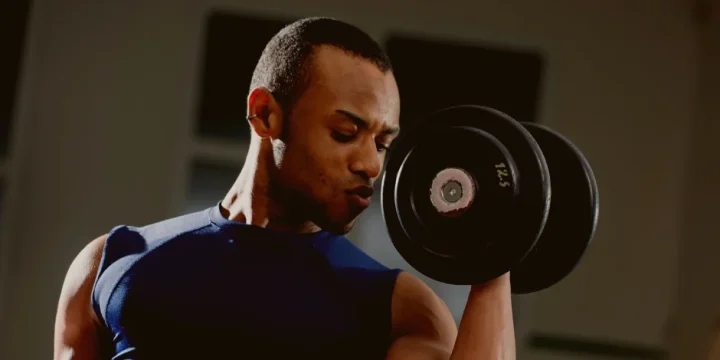Most pulling workouts require bigger and stronger biceps. Your biceps are engaged whenever you perform a hard deadlift. The same holds for pull-ups, barbell rows, and other exercises.
Barbell bicep curls are an excellent workout for strengthening and building up your biceps.
Bodybuilding icons like Arnold Schwarzenegger and Lou Ferrigno used this exercise to build their arms.
As an experienced fitness trainer, I will provide everything you need to know regarding barbell biceps curls, including the proper form on how to do barbell curls.
Quick Summary
- Good form in barbell curls includes squeezing the shoulder blades, engaging the core, and maintaining a straight torso, with variations like the drag curl and eccentric barbell curls offering additional benefits.
- To effectively build and strengthen biceps, barbell curls should be performed in proper form, involving strong kinetic chains and focused muscle engagement.
- According to the National Institute of Health, eccentric exercise, a component of barbell curls, has been shown to significantly increase muscle soreness and development.
- In my opinion, incorporating barbell curls into a workout routine is a proven and efficient method for enhancing bicep size and strength, as demonstrated by bodybuilding icons like Arnold Schwarzenegger.
How To Perform Barbell Curls

Barbell curls are performed the same way as every other curl (Zottman curl, for example), but you must be properly set up to reap the benefits of the barbell curl.
Good form involves squeezing the shoulder blades, clenching your core, and pressing your torso.
A straight bar gives you additional alternatives for hand and wrist positioning.
One Golden Age notion was to do a wide-grip barbell curl. However, a shoulder-width grip on the bar might be a better option.
You'll be able to load heavier while alleviating some wrist strain as you curl near the top.
"The barbell allows you to add more load than you may be able to by using dumbbells for a bicep curl."
- Josh Honore, NASM Certified Personal Trainer
Performing the barbell bicep curls:
- Grasp a standard barbell or Olympic bar approximately shoulder width apart, employing an underhand grip (palms facing up).
- Stand tall with your feet together (you may find it more comfortable to put one foot back for support), your back straight, and your arms fully stretched out.
- The barbell should not come into contact with your body.
- Slowly curl the barbell up while keeping your gaze ahead, elbows tucked down at your sides, and your body motionless.
- Squeeze your biceps firmly at the top of the action, then gradually drop them down to the starting position.
- Repeat for the needed number of reps.
Also Read: 21s Bicep Curls
What Are Barbell Curls?
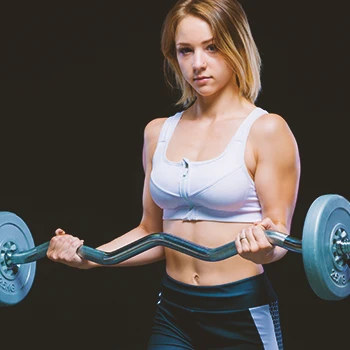
The barbell curl is a single-joint isolation workout commonly used as an auxiliary action during pull or back-and-bicep exercises.
While it's straightforward and the equipment is widely accessible, I've noticed some clients face challenges due to physical constraints or improper form.
Generally, this exercise is performed with a straight Olympic barbell and weight plates.
Variations of barbell curls that employ different types of bars (like the parallel barbell spider curl and the EZ bar curls exercise) are not regarded as the same exercise.
They will typically have distinct muscle recruitment mechanisms and ranges of motion.
Barbell Curl Variations

Below are the barbell curl variations that may boost strength, size, and overall muscle development.
Drag Curl
The drag curl requires you to maintain the bar against your torso for the entirety of the action, "dragging" it up to your chest.
This version locks the upper arms into position and puts a lot of strain on your biceps. However, remember that you won't be able to curl as much with this form.
I recommend using this move as a finisher at the end of a workout session.
Eccentric Barbell Curls
The eccentric barbell curl is a technique for overloading the biceps and putting a huge strain on the tissues.
According to the National Institute of Health (NIH), eccentric exercise and the eccentric component of muscular contraction (lengthening under load) have been demonstrated to increase delayed onset muscle soreness (DOMs) and muscle development [1].
To perform this, curl the weight up (you may have a partner assist you) and gradually lower the weight under control and on a tempo (like three to five seconds down).
Seated Barbell Curl
The sitting curl is a partial range of motion barbell curl because it frequently omits the bottom section of the range of motion.
I find this exercise effective for increasing bicep load and isolating the upper parts of the biceps.
Barbell Curls Alternatives

Barbell Preacher Curl
The barbell preacher curl is a biceps curl variant that may be performed with a barbell, dumbbells, an cambered EZ bar, or a machine, to mention a few options.
To isolate the bicep entirely, the lifter positions the hand at an angle on a preacher curl bench, stabilizing the arm and shoulder on a pad (to limit movement).
The Hammer Curl
The hammer curl is a curl variant that targets the biceps and forearms at a slightly different angle, giving your arm training and growth a new dimension.
I often have clients perform this using dumbbells, which allow for a neutral wrist position during the curl.
Chin-Up
The chin-up remains among the best workouts for increasing biceps size and strength.
If a lifter lacks biceps size and strength and cannot perform chin-ups (for volume), there's a significant likelihood that's why they don't have huge and powerful upper arms. Therefore, start there.
The Benefits of Barbell Curls

The standing barbell curl has several advantages for power, strength, and fitness athletes.
- Amazing biceps builder: Because of the barbell curl's high loading capacities and recruitment potential, it is extremely efficient in inducing muscle hypertrophy and strength improvements that transfer over to other workouts that may engage the biceps. When combined with other biceps exercises like pull-ups or rows, barbell curls can enhance the growth of the arm muscles.
- Prevention of elbow/arm injuries: According to the NIH, the biceps are in charge of elbow flexion and assist the grip muscles during pulls and heavy carries [2]. Weak and undeveloped biceps may cause grip problems, bicep tension, and, in some cases, muscular tears. A more powerful biceps is a resilient biceps.
- They are easily accessible: You may curl with a barbell, a set of dumbbells, or even a nice kettlebell. You don't need to bring an expensive, quality cable machine to your home gym to create a set of Larry Scott-style sleeve-huggers. You could do barbell curls in approximately a square foot if you needed to. They're easy and simple to execute.
- They increase grip strength: The barbell bicep curl may be used to develop grip and arm power, which can affect pulling performance and stability. Your biceps move the weight, yet your palms, wrists, and forearms support it. Your secondary muscles will be stressed, resulting in a crushing grip.
- Enhanced upper body mass: If you're aiming to bulk up, the barbell curl can help. Muscles, like biceps, grow stronger and bigger when stressed, provided your diet is on point. This exercise not only targets the biceps but also engages the chest, shoulders, and traps. Plus, you can load more weight on a barbell curl than other curl variations, accelerating muscle growth and delaying plateaus.
Related: 10 Best Barbell Exercises for Building Muscle and Strength
Muscles Worked by Barbell Curls

Almost all exercises, including barbell curls, employ more than one muscle.
The barbell curl primarily targets three arm muscles. The brachialis, biceps brachii, and, to a lesser extent, brachioradialis.
- Biceps brachii: According to the NIH, the biceps brachii, located at the front of the upper arm, has a long head on the outer part and a short head inside [3]. Curls effectively target both heads, requiring forearm rotation and elbow bending for a comprehensive bicep workout.
- Brachialis: According to a study from the National Library of Medicine, the brachialis is a key elbow flexor [4]. When worked out, it expands, pushing against the biceps, and giving the arm additional mass.
- Brachioradialis: According to NIH, this thick muscle at the back of the forearm assists in barbell curls [5]. While not the primary focus, it contributes significantly to the lift, enhancing forearm size and grip strength alongside bicep growth.
Who Should Do Barbell Curls?

I recommend barbell bicep curls to those focusing on power, strength, and overall fitness, especially if they're aiming to boost arm and grip strength along with upper body mass.
Additionally, barbell curls can offer extra injury resilience and effective training for individuals prone to bicep and elbow issues.
"Everyone, from professional athletes to bodybuilders to regular Joes who find their way around the gym, can execute barbell biceps curls. However, not everyone should perform this move. At least not at first."
- Ebenezer Samuel, Certified Strength & Conditioning Specialist
Bodybuilders
Bodybuilders seek to pack as much muscle mass as possible while shedding fat.
Because every muscle in bodybuilding is on display, these athletes devote as much attention to the biceps as they do to their back or chest routines.
Because the barbell curl may be heavier than other biceps exercises, it's an excellent option for people who want to shape their bodies.
Power and Strength Athletes

Strength and power athletes may use the barbell curl to build arm and gripping power and increase eccentric loading potentials (injury protection from tears and strains) during heavy deadlifts and best pulling workouts.
Here's additional information on how stronger biceps might benefit particular strength sports:
- Strongman: Powerful biceps can help with injury avoidance and arm and grip strength for heavy pulls, truck pulls, farmer's carries, and other activities.
- Powerlifting: Like strongman competitors, strong biceps can influence pulling strength and efficiency, particularly in preventing bicep strains and tears.
- Olympic Weightlifting: Although weightlifters do not wish to pull with their arms when performing snatches, cleans, and jerks, stronger arms might boost pulling and grip strength. Having strong arms might also aid in the pull-under phase.
General Lifters
The two reasons listed above will assist general lifters.
Even if they don't require the bulk of a bodybuilder or the power of a strongman, regular gymgoers might aim for increased mass and strength.
It will improve their overall gym performance, self-assurance, and bicep mobility.
Common Barbell Curl Mistakes

When performed correctly, the barbell curl, like many other exercises, is easy and effective.
Here are some typical mistakes that might happen if you don't pay attention to technique.
Wrist Bending
In my training sessions, I emphasize keeping the wrists firmly in a neutral position throughout the exercise.
This approach reduces pressure on small connective tissues and more effectively transfers the force generated by the biceps.
Allowing the wrists to deviate from this neutral posture, whether by overpronating, oversupinating, or twisting, can lead to discomfort and potential injury.
"This is the most common mistake committed during barbell curl execution, and it is the cause of many lifters' wrist or forearm soreness when curling a straight bar."
- Andy Stern, Certified Personal Trainer & Rumble XPro
Excessive Upper Body Movement

Swinging your torso during barbell curls often leads to mistakes and potential injuries. It not only lessens bicep tension but also signals lifting too heavy, compromising technique.
Using your whole upper body instead of just your biceps raises the risk of lower back injury, which can disrupt your long-term training plan.
The sole exception is when you consciously utilize your whole body to move heavy weights with perfect control to accentuate the eccentric (lowering phase).
This controlled movement spreads force across the legs, back, and shoulders, avoiding hip swings and lower back strain.
For maximum muscle power, maintain retracted shoulder blades and a tight core and glutes with each rep. Slowly lower the weight to curb swinging and effectively work your biceps.
Too Wide a Grip on the Bar
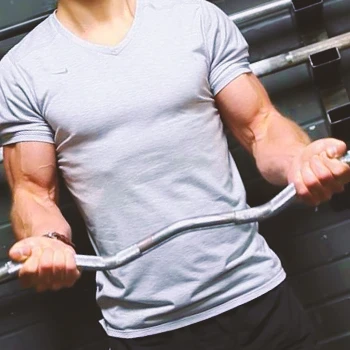
Some lifters mistakenly believe that an extra-wide grip in bench pressing or curling will broaden their chest or reshape their biceps, but that's not how it works.
An improper grip can strain the forearm and biceps tendons, especially at the elbow joint.
Overstressing arm muscles during a set can lead to wear and tear, potentially causing biceps tendon tears. It's crucial to use a grip width that suits your arm length.
Those with longer arms might need a wider grip for effective muscle tension, but generally, keep your hands closer to your hips than double the width of your shoulders.
Incorporating Barbell Curls into Circuit Training
Barbell curls, when integrated into circuit training, offer a unique blend of cardiovascular and muscular endurance benefits.
In a circuit where exercises are performed with minimal rest, barbell curls increase heart rate, enhancing cardiovascular fitness.
The repetitive nature of circuits boosts muscular endurance, especially in the arms. By combining barbell curls with varied exercises targeting different muscle groups, circuits provide a balanced workout, improving overall fitness.
This approach ensures a comprehensive training session, maximizing both cardiovascular health and muscular development in an efficient and time-effective manner.
FAQs
Are Barbell Curls Effective?
Yes, barbell curls are effective. They increase your upper body strength. Barbell curls may help you develop larger biceps with consistent practice. In general, barbell curls allow you to raise more weight.
Are Barbell Curls Better Than Dumbbell Curls?
Both barbell and dumbbell curls are great. Dumbbells are the ideal barbell curl alternatives if you want to develop your biceps and stabilize the muscles. If you prefer heavy lifting and want to progress with the load you use, a barbell is an excellent choice.
Do Curls Make Your Arms Bigger?
Yes, curls make your arms bigger. Biceps curls help maximize the bicep size. For bigger arms, perform variations such as EZ bar and hammer curls.
References:
- https://www.ncbi.nlm.nih.gov/pmc/articles/PMC6510035/
- https://pubmed.ncbi.nlm.nih.gov/27061680/
- https://www.ncbi.nlm.nih.gov/books/NBK519538/
- https://www.ncbi.nlm.nih.gov/books/NBK551630/
- https://www.ncbi.nlm.nih.gov/books/NBK526110/
About The Author
You May Also Like
